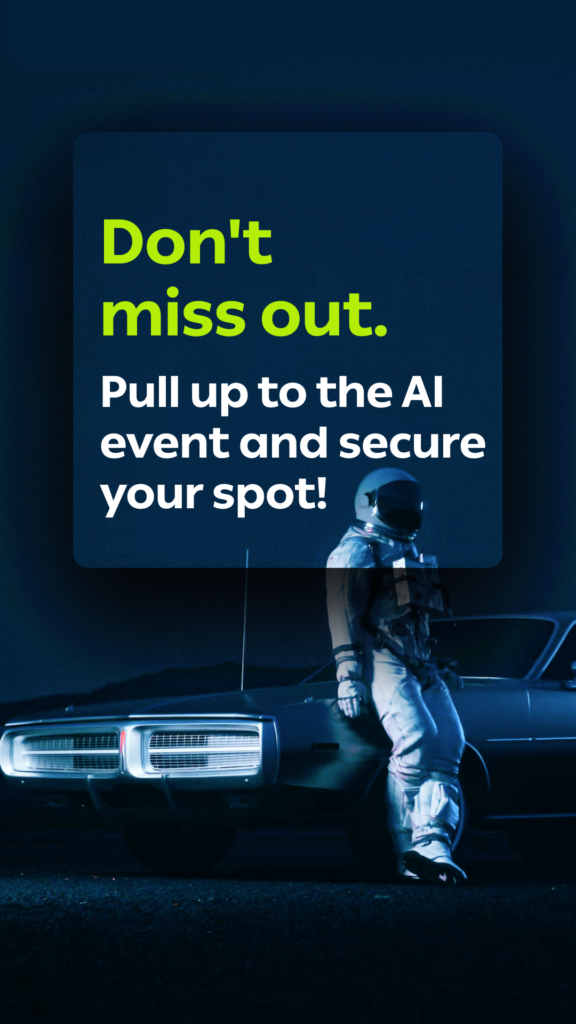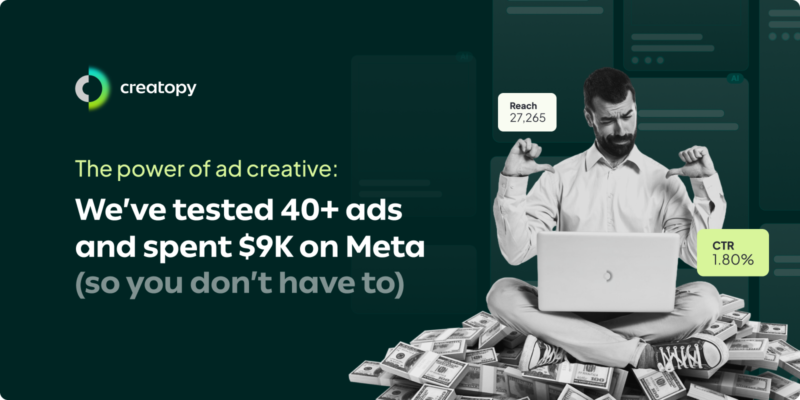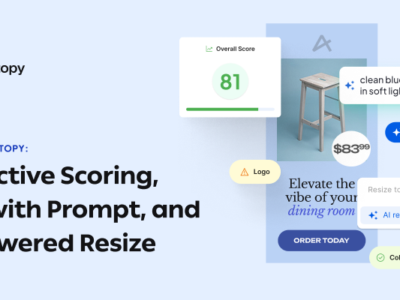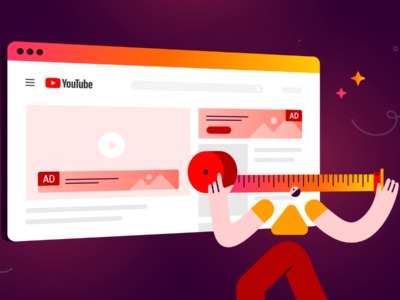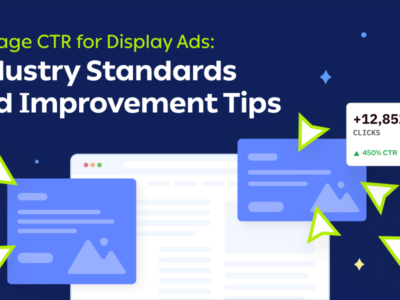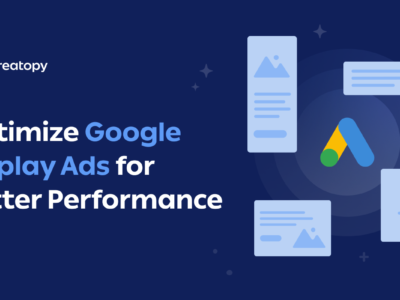At Creatopy, we’re all about the power of ad creatives—they’re the biggest differentiator in your campaigns and the one thing you can truly control. To prove it, we created over 40 Instagram ad variations for our “Brand-Centric AI: Generating Winning Ads” event, testing celebratory tones, humor, industry-specific insights, FOMO triggers, and even generic designs to challenge our assumptions.

Hypothesis
We believed highly personalized, audience-specific ad creatives would outperform generic messaging in engagement and conversion rates. To test this, we crafted hyper-targeted designs tailored to specific frustrations, emotions, and industry insights and compared them against broad, celebratory themes.
To challenge our assumptions, we also included a few wildcard designs—generic, cliché creatives that you’d expect to blend into the background. From poking fun at AI fatigue to evoking FOMO (“Creative minds are already in!”), we aimed to see if simplicity or predictability could outperform personalization.
The goal was simple: identify whether personalization truly reigns supreme—or if universal appeal and even the expected could hold their own.
Objectives and goals
When we set out to promote our “Brand-Centric AI: Generating Winning Ads” event, we thought, why not make a learning experience out of it too? Beyond simply filling seats (virtual ones, at least), we wanted to dig deeper into what makes ad creatives perform.
Primary goal:
Drive relevant, high-quality registrations for the event. By “quality,” we focused on attracting registrants who aligned with our target audience: professionals actively engaged in advertising, creative industries, or AI-driven workflows. While we didn’t set specific cost metrics for this first experiment, we prioritized understanding which creative approaches resonated most with this audience.
Secondary goals:
- Discover the most effective creative formats by experimenting with diverse visuals and messaging styles.
- Test how personalized approaches stack against universal themes to understand what truly resonates.
- Measure cost-efficiency and audience engagement to refine our creative strategies for future campaigns.
Key Performance Indicators (KPIs):
- Registrations and Cost per Registration (CPA): To measure how well our ads converted interest into action.
- Click-Through Rate (CTR) and Cost per Click (CPC): To gauge audience engagement and efficiency.
- Instagram Page Engagement: Reactions, comments, and saves that reflect how compelling our creatives were.
- Attendance Rate: Track how many registrants showed up at the live event to identify follow-up opportunities.
Experiment setup
This campaign wasn’t just about promotion—it was about learning. We saw an opportunity to turn our event outreach into a creative experiment, exploring what works in ad campaigns.
- Audience-specific segmentation:
- Marketing executives: Focused on scaling campaigns and maximizing ROI.
- Designer executives: Highlighted brand consistency, creativity, and streamlined workflows.
- Business owners/CEOs: Emphasized growth opportunities and competitive advantages.
- Creative variety:
- Celebratory tones that invited audiences to join an exclusive opportunity.
- Relatable frustrations and humor, tackling common challenges like endless design revisions or AI fatigue.
- FOMO triggers to create urgency (“Creative minds are already in—don’t miss out!”).
- Industry-specific insights: Some ads used humor or success stories, tying creative automation to real-world results.
- Clichés: To see if simplicity and familiarity could outperform bold creativity.
- Targeting and personalization:
- Lookalike audiences are built from client lists of marketers, designers, and business owners.
- Manual targeting by job title, company, age, and location.
- Meta Advantage+ campaigns, allocating a portion of the budget to automated optimization for event registrations.
- Format testing:
- Static and animated visuals went head-to-head to identify which format was more effective at capturing attention and driving action.
- Timeline and budget:
- The campaign ran for 22 days, with a total budget of $9,196.08. This allowed us to generate meaningful data on CTR, CPC, engagement, and cost per registration.
By turning our promotional efforts into a structured experiment, we uncovered actionable insights into what truly drives engagement and conversions while hitting our event goals.
Here’s a breakdown of our experiment setup, results, and some unexpected lessons learned.
Key performance overview
1. Broad, inclusive messages outperform across all audiences
Top creative: The “Congrats” ad consistently emerged as the highest-performing visual across all three audience segments—Marketing Executives, Designer Executives, and Business Owners. Its celebratory and universal tone made it broadly appealing, driving the best metrics in impressions, CTR, and cost-efficiency.
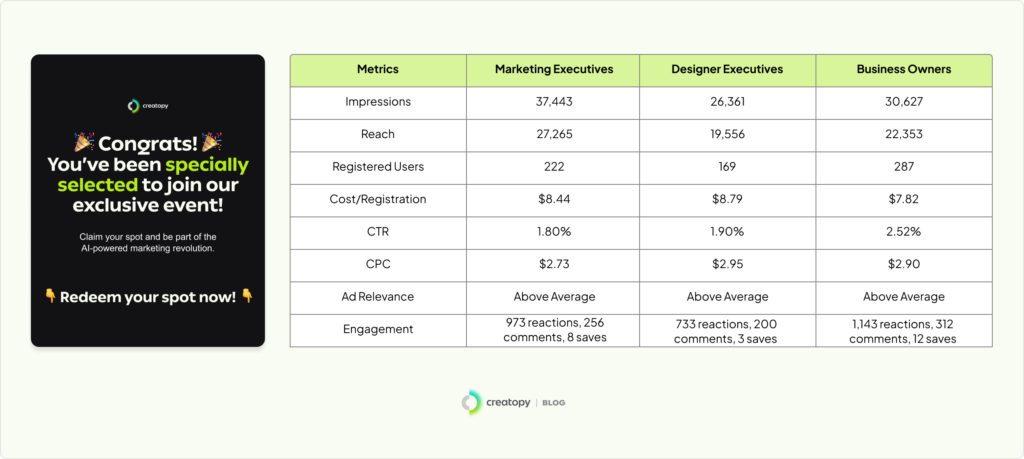
2. Quirky and niche-specific ads are polarizing
Creative: “AI Again” aimed to address AI fatigue humorously with a space-themed visual.
While it resonated with Business Owners and achieved an Above Average Ad Relevance score, it underperformed on CTR and conversions.
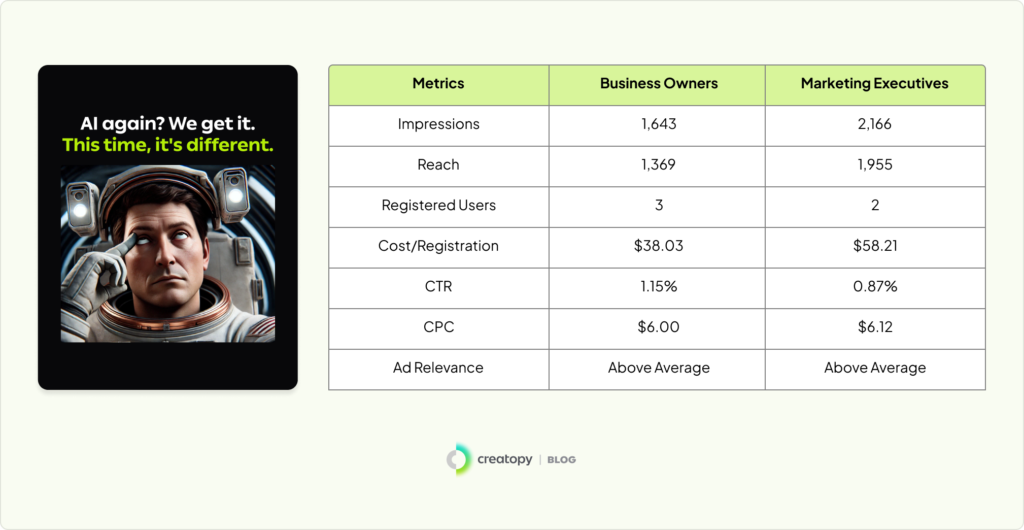
Insight: “AI Again” grabbed attention but lacked a strong conversion-focused CTA, leading to a higher cost per registration.Takeaway: Quirky and humor-driven messaging can generate curiosity but requires a direct benefit or urgency to convert. Without this, the cost-effectiveness diminishes.
3. Targeted messaging resonates but costs more
Creative: “Final,” targeted at Designer Executives, emphasized control over brand consistency.
While effective in driving niche engagement, it came at a higher cost per registration compared to universal messages.
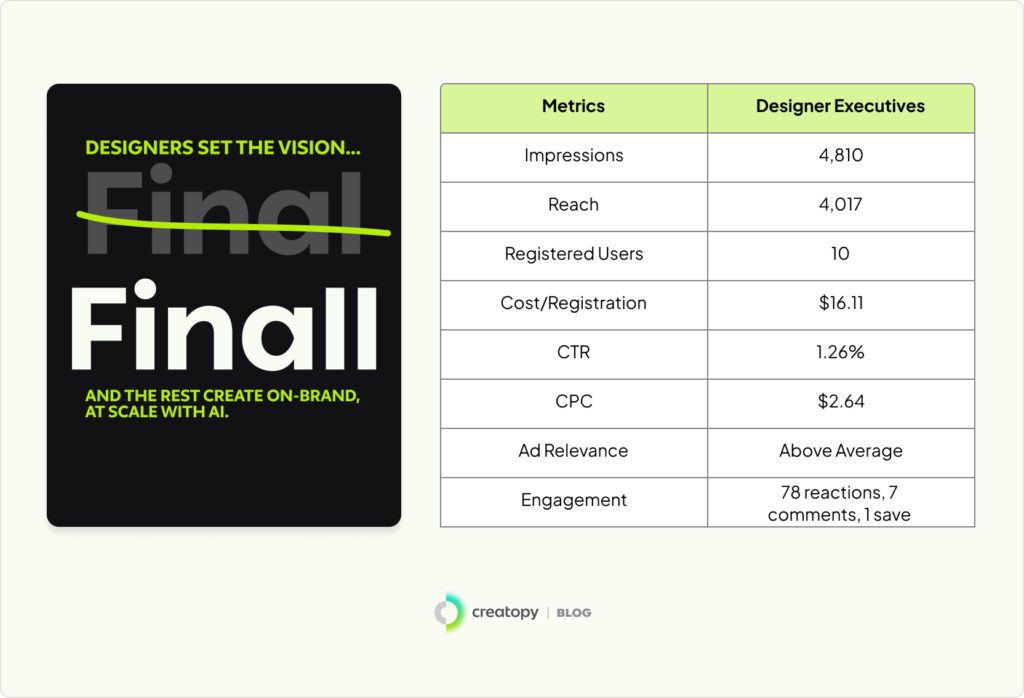
Insight: Specific messaging like “Final” connected with designers but fell short in scaling due to its narrower appeal.
Takeaway: Niche creatives are valuable for targeted engagement but may not deliver the same cost-efficiency as universal campaigns.
4. Relatable social proof drives designer engagement
Creative: “Designers join” utilized industry-specific insights with a relatable message: “Join the 75% of designers transforming their work with AI-powered tools.”
It delivered strong engagement and a relatively low CPA.

Insight: “FellowDesigner” highlighted relatable industry stats, fostering trust and relevance. However, its higher CPC suggests room for optimization in visual or targeting strategies.Takeaway: Industry stats combined with relatable messaging can boost credibility but must balance cost-efficiency for a broader impact.
5. Static visuals outperform animated ads
Across all segments, static creatives like “Congrats” outperformed animated alternatives in clarity and direct messaging.
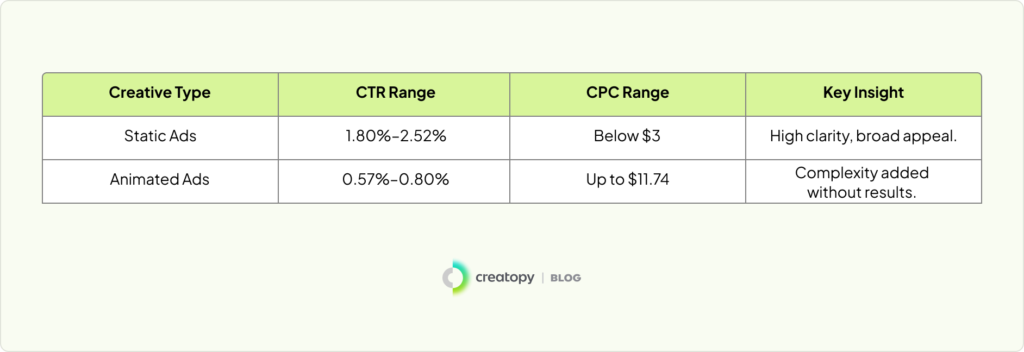
Insight: Animated visuals added complexity without increasing engagement or conversions.
Takeaway: Static ads offer a cost-effective, high-performing alternative for conversion-driven results in high-stakes campaigns.
Final thoughts
When it comes to ads, the simplest ideas often pack the biggest punch—but context is everything. This experiment confirmed our hypothesis that personalized, audience-specific ad creatives can build deeper connections, but it also highlighted that universal themes, like celebratory messaging, excel in cost-efficiency and reach.
Outcomes vs. Hypotheses
- Personalization vs. universal themes: While personalized designs resonated strongly with specific audiences, broad celebratory creatives like “Congrats” delivered consistent engagement across segments, proving simplicity paired with a strong CTA can often outperform.
- Relatability and humor: While quirky, humor-driven ads built niche appeal, they didn’t outperform more inclusive approaches in driving overall registrations.
- Cliché creatives: As expected, generic designs underperformed, but they provided valuable insights into the importance of intent and resonance in creative execution.
Limitations and challenges
- Limited campaign duration: With only 22 days, most creatives didn’t exit the learning phase, limiting their potential to optimize fully.
- Overloaded testing: Testing 40+ creatives diluted impressions, limiting the actionable insights we could gather from individual variations.
- Low attendance rates: Despite strong registration numbers, only 5.18% of registrants attended—well below the industry benchmark of 35–50%. This underscored the need for stronger follow-up strategies, like exclusive incentives or urgency-driven messaging closer to the event.
- Placement-specific creatives: Focusing on Instagram Feed and Stories limited reach, missing opportunities in placements like Reels and Explore.
- Underutilized Meta’s advantage+: Allocating just 3.58% of the budget to Meta’s AI-driven campaign optimization restricted the data we could gather on its potential impact.
Future testing opportunities
- Longer campaign durations: Extending campaigns to 4–6 weeks would allow creatives to stabilize, providing richer data for refinement and scaling.
- Animated vs. static creatives: Future experiments could isolate the impact of motion by testing identical messaging across both formats.
- Refining celebratory messaging: Building on the success of the “Congrats” creative, we could experiment with variations in tone, design, and CTAs to optimize engagement further.
- Enhanced advantage+ testing: A larger budget allocation for AI-driven optimization could reveal new opportunities for cost efficiency and audience targeting.
- Optimizing the landing page: Testing tailored headlines, event previews, testimonials, and a streamlined form could improve registration conversions and engagement rates.
Key takeaway
Creativity isn’t one-size-fits-all. While simplicity and clarity often win, experimentation is key to unlocking what resonates with the right audience in the right context. This experiment taught us that ad creatives aren’t just about catchy designs—they’re about bridging curiosity and action. And with every test, we’re getting closer to mastering that balance.
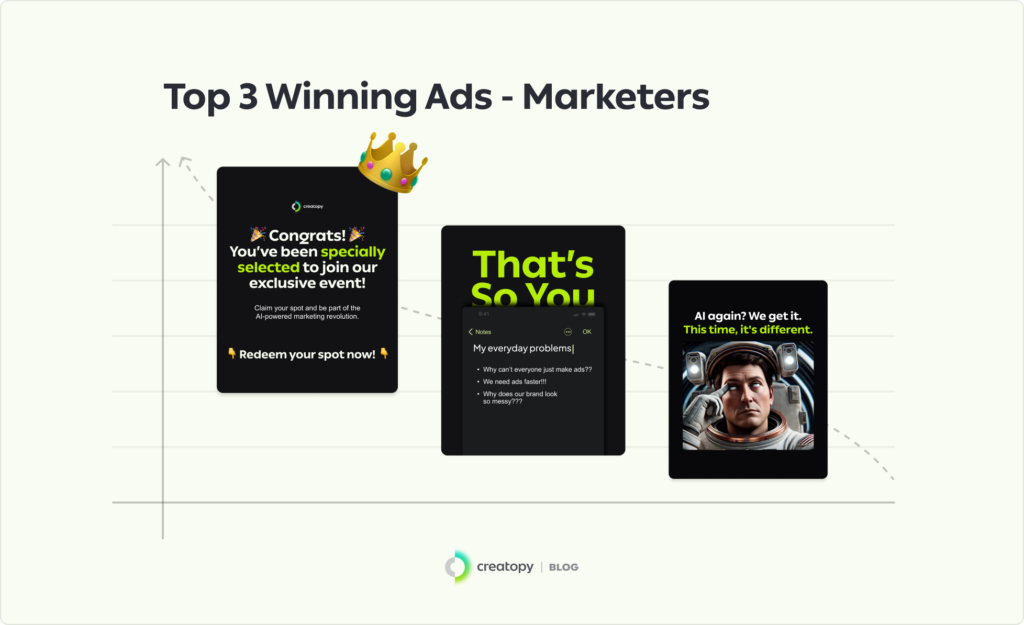
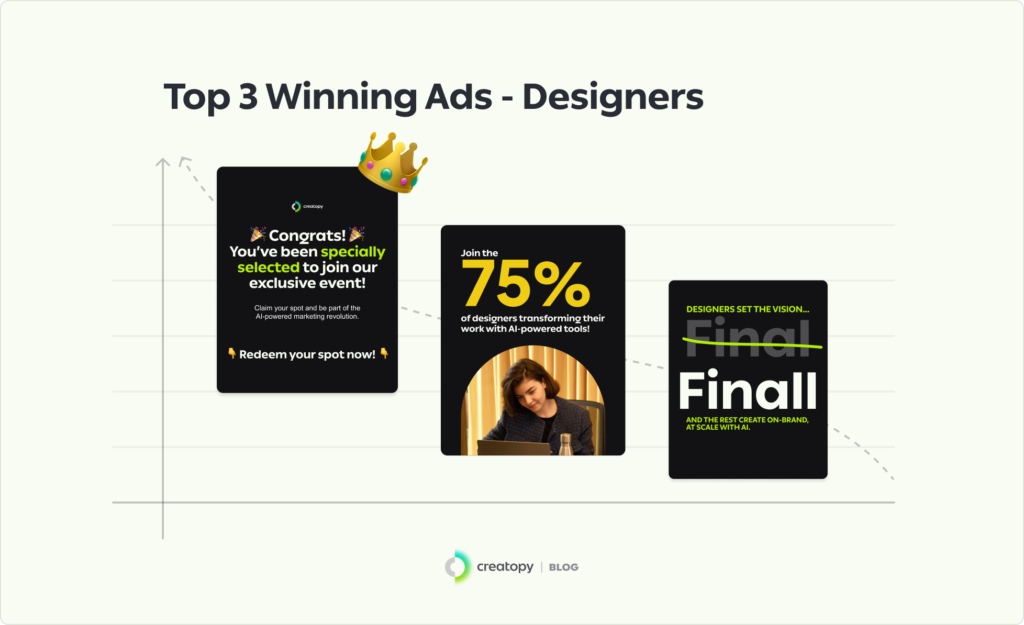
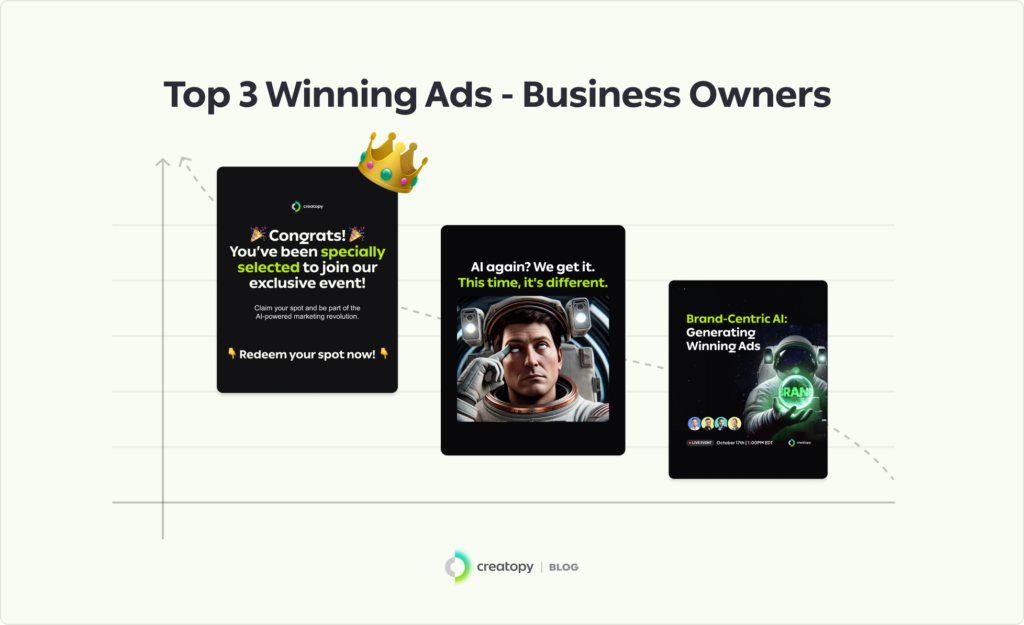
Reflections from the team
A designer, a marketer, and a copywriter walk into a campaign… and here’s what happened:
Design Insights (Rebeca Guie, Social Media Designer)
“After designing over 40 visuals for the event, I tried everything—bold ideas, creative risks, and lots of tweaks. Then, just for fun, I made one super generic design with the most basic copy as a joke. Guess which one ended up being the crowd favorite? Yep, the ‘joke’ one! It’s funny how sometimes the simplest ideas are the ones that resonate the most.”
Marketing Perspective (Bernadett Kovacs-Dioszegi, Marketing Specialist)
“Who would’ve thought the ‘spammiest’ ad would be the top performer? Well, our data-driven approach to testing different messages and visuals proved me wrong. Simple, high-contrast designs can be surprisingly effective in capturing attention and driving engagement. This experiment reminded me that assumptions can be misleading. Let’s keep testing, learning, and surprising ourselves!”
Creative Insights (Laura Trif, Digital Media Human)
“Grateful for the space to play with ideas and words—whether it was FOMO-driven hooks, puns, or even poking fun at the endless AI buzz. We tried all kinds of approaches, and it was exciting to see how each one resonated. A great reminder that curiosity is always the best starting point for any creative journey.”
Post-scriptum: fun insights from edge cases
- Small but mighty
The “Scaling with AI” creative quietly outperformed its peers with an unexpected 3.33% CTR, despite only having 30 impressions and one click. It’s a reminder that even small, targeted campaigns can still deliver surprising results when the right audience is reached.
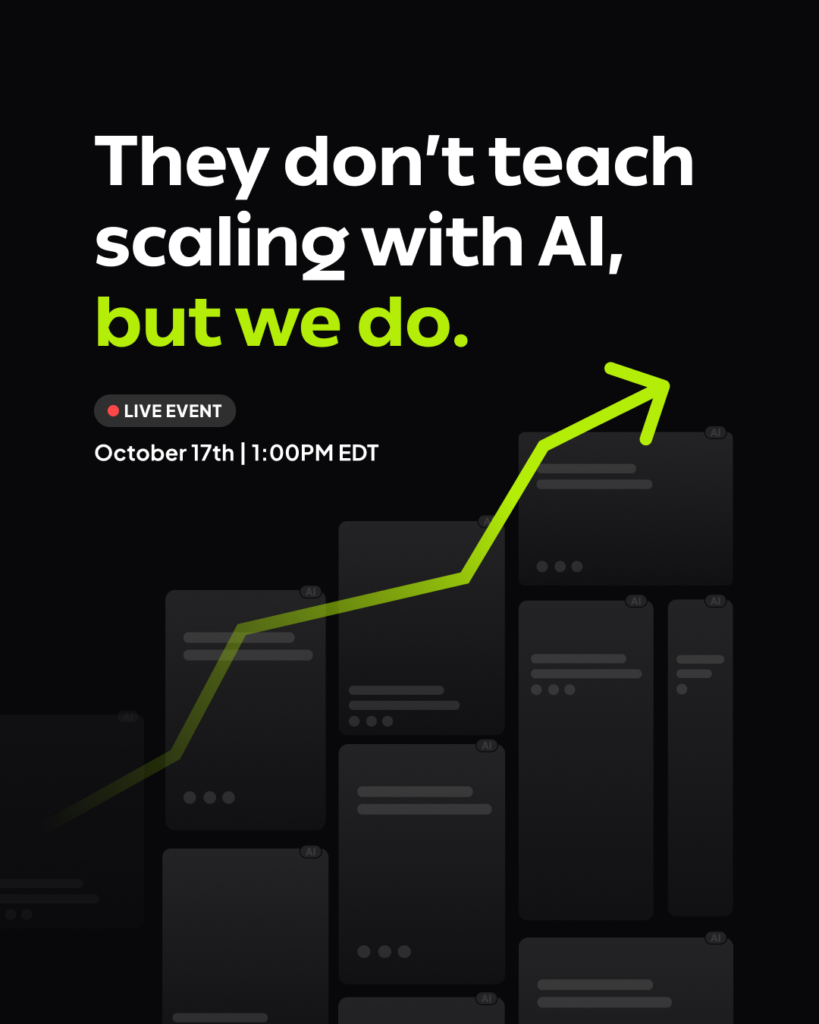
2. The stealth engagement champ
“Join the creative minds” had 13 impressions and zero clicks, yet somehow managed to cost $0.95. It’s one of those oddities that proves even algorithms have their quirks—sometimes things don’t add up, but the data still makes its way into the report.
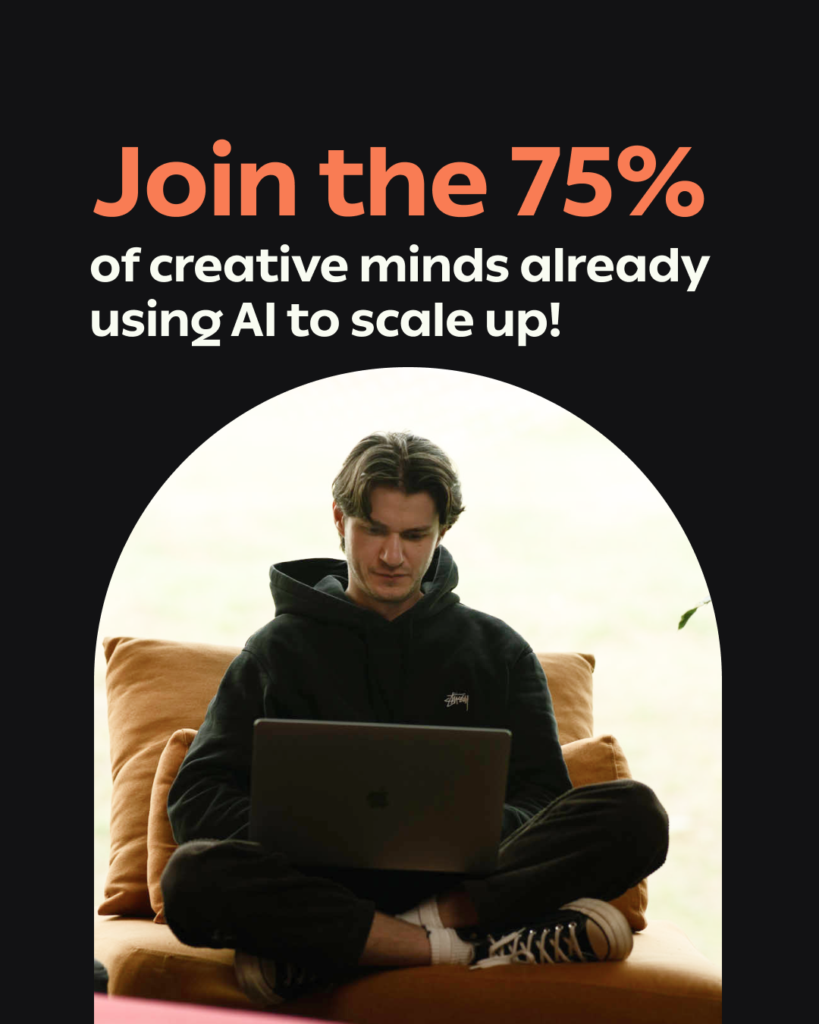
3. The animated fade-out
“Animated Designers,” despite a relatively high spend of $27.99, only managed a CTR of 0.45%. This suggests that animation doesn’t always guarantee attention—sometimes static visuals can be just as effective (or more).
4. The budget super saver
“Vacay” spent just $0.06 for two impressions and no clicks, making it the least expensive ad in the campaign. While not an ROI win, it certainly provides some laughs—and a reminder that not every dollar spent needs to generate massive results.
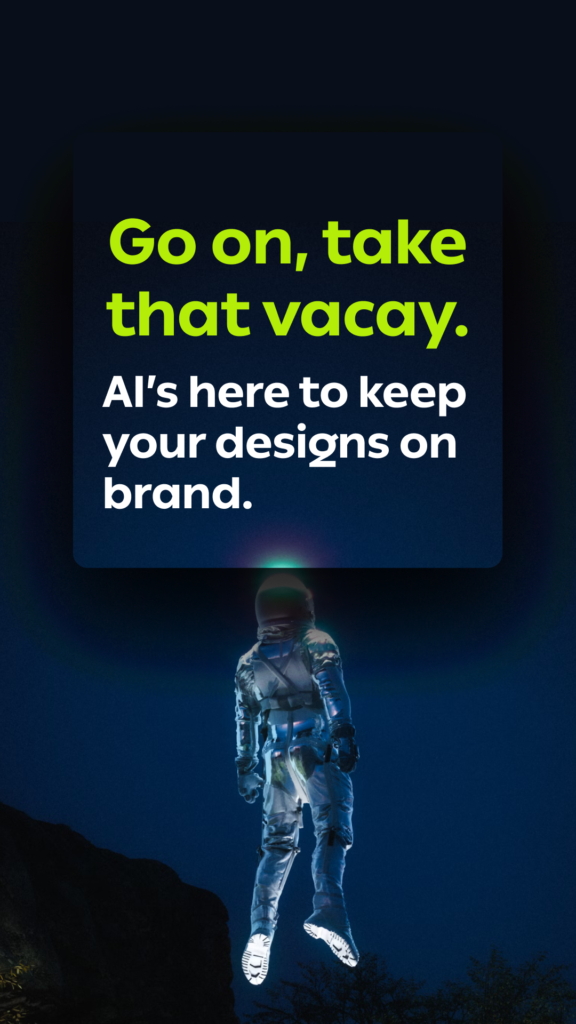
5. The “close, but no cigar” effect
“Don’t Miss Out” reached 196 impressions but failed to generate any registrations or post saves. While FOMO can grab attention, this one lacked the stronger hook needed to drive real action—highlighting how crucial it is to back up emotional appeals with a compelling CTA.
